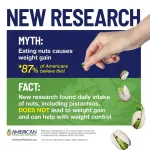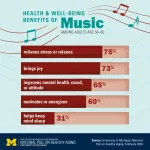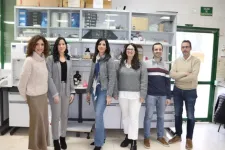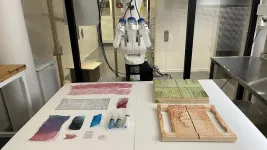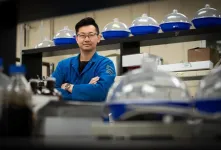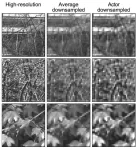(Press-News.org) More than half of Americans do not currently meet the daily recommendation of 5–7 ounce equivalents^ of nuts and seeds per week.1
One possible contributor to such low intakes of tree nuts could be a fear that the calories or fat composition of tree nuts leads to weight gain.
For example, past studies suggest that up to 87% of Americans think eating nuts can lead to weight gain due to their dietary fat content2 despite scientists confirming that eating nuts every day, including pistachios,3 can be an achievable and simple strategy to stave off a range of health conditions with excess weight as a risk factor, including diabetes and heart disease.
Low tree nut intake by population groups including young adults in their 20s and 30s is especially problematic since they are at high risk for excess abdominal obesity and for developing Metabolic Syndrome (MetSx) - precursors to prediabetes and full-blown diabetes. In fact, the overall rate of MetSx has increased to 21.3% in this group of the population.4
This New Year is the perfect time to close the book on harmful food myths once and for all. Included among these myths is the misconception that the fat content of pistachios – and other nuts – leads to weight gain, which may prevent some from reaching their 2024 self-care journey in a flavorful, nutritious, and satisfying way.
A recent study,5* published by Heidi J. Silver, PhD, RD, and colleagues from Vanderbilt University Medical Center, fed 84 Millennial-aged adults (22–36 years old) who had at least one metabolic syndrome risk factor (e.g., high blood pressure, high blood glucose, excess body fat around the waist, or abnormal blood cholesterol levels) either a snack of one ounce of mixed, unsalted tree nuts (including pistachios) or one ounce of a carbohydrate snack (like unsalted pretzels or graham crackers) twice per day for 16 weeks.
An overview of key findings from this study include:
Without the study participants making any other changes to their diet (without restricting calorie intake) or lifestyle habits (without changing physical activity habits), researchers saw a 67% reduction in MetSx risk for females and a 42% reduction in MetSx risk for males who ate tree nuts in the study.
Researchers found that participants eating one ounce of mixed tree nuts two times per day (including pistachios) had no change in their energy intake or body weight over the 16-week study period.
These findings are consistent with past research that showed eating as much as 15-20% of calories from pistachios does not lead to weight gain.3,6
In female participants, there was evidence that eating the mixed tree nuts led to reduced waist circumference (abdominal fat), a key risk factor for MetSx, diabetes, and heart disease.
In male participants, there was evidence that eating the mixed tree nuts led to reduced blood insulin levels, another important risk factor.
Researchers also observed that the bodies of participants eating tree nuts were able to use fat for energy more efficiently compared to a carbohydrate snack, which may explain why the group eating tree nuts, like pistachios, did not increase body weight or body fat during the study period.
Past research also suggests that the body absorbs 5% fewer calories from eating pistachios than previously thought.7
“We specifically designed the study to be able to investigate the independent effects of eating tree nuts on body weight by ensuring that the number of calories the participants ate during the 16-week intervention period matched the amount of calories they expended each day, which is one of the overall strengths of the study design and results,” said Silver.
“This carefully designed and well-controlled study shows that eating tree nuts, like pistachios, does not have to lead to weight gain and can be an important part of anyone’s self-health care routine in 2024,” she explains.
The study authors also note that additional research on the cardiometabolic response to tree nuts is needed in other subgroups of the population.
Eating tree nuts, like pistachios, daily is an easy way to experience a flavorful, nutritious, and portable snack that can reinvigorate a person throughout the New Year.
In addition, to a healthy fat profile, pistachios grown in the U.S. are also a plant-based source of complete protein. Indeed, 1 serving of pistachios (1 ounce or 49 kernels) is an excellent source of protein, fiber, vitamin B6, thiamin, phosphorus, and copper.
For more information about research on the health benefits of pistachios, visit https://americanpistachios.org/nutrition-and-health.
^1 ounce equivalent of nuts is equal to 1/2 ounce of nuts.
*This study was funded by the International Tree Nut Council Nutrition Research & Education Foundation.
About American Pistachio Growers
American Pistachio Growers is a non-profit trade association representing more than 865 members who are pistachio growers, processors and industry partners in California, Arizona and New Mexico. American-grown pistachios are sold under many quality brand names internationally, so look for country of origin on packaging. For more information, visit AmericanPistachios.org.
References
U.S. Department of Agriculture and U.S. Department of Health and Human Services. Dietary Guidelines for Americans, 2020-2025. 9th Edition. December 2020. Available at DietaryGuidelines.gov.
Neale EP, Tran G, Brown RC. Barriers and facilitators to nut consumption: A narrative review. Int J Environ Res Public Health. 2020;17(23):9127.
Bulló M, et al. Nutrition attributes and health effects of pistachio nuts. Br J Nutr. 2015;113 Suppl 2:S79-93.
Hirode G, Wong RJ. Trends in the prevalence of metabolic syndrome in the United States, 2011–2016. JAMA. 202;323:2526–2528.
Sumislawski K, et al. Consumption of tree nuts as snacks reduces metabolic syndrome risk in young adults: A randomized trial. Nutrients. 2023;15(24):5051.
Burns‐Whitmore B, et al. Effects of pistachio consumption on body composition and blood lipids in healthy young women (640.6). The FASEB Journal. 2014;28:640-6.
Baer DJ, Gebauer SK, Novotny JA. Measured energy value of pistachios in the human diet. Br J Nutr. 2012;107(1):120-5.
###
END
A more accurate way of identifying underground nuclear tests, including those conducted in secret, has been developed by researchers at The Australian National University (ANU).
The new method could help international observers better identify tests carried out by countries or actors known to possess nuclear weapons, as well as providing new information about those suspected of being armed.
According to lead author Dr Mark Hoggard, in the aftermath of the Cuban Missile Crisis and Partial Test Ban Treaty in the 1960s, testing of nuclear ...
DALLAS, Feb. 6, 2024 — Five promising scientific researchers will advance their work to better understand and treat the most common birth defect in the U.S., congenital heart defects (CHDs), thanks to joint financial support from the American Heart Association and The Children’s Heart Foundation's Congenital Heart Defect Research Awards program.
To date, the American Heart Association, celebrating 100 years of lifesaving service and devoted to a world of healthier lives for all, and The Children’s Heart Foundation, dedicated to funding congenital heart defect research, have ...
HOUSTON – (Feb. 7, 2024) – Artificial intelligence is good at many tasks involving data in the form of text, audio and images, including face recognition and text summarization.
“AI is an amazing tool and has been extended over less conventional domains, such as climate data defined on spheres (representing the Earth) and traffic data defined on road networks,” said Santiago Segarra, assistant professor of electrical and computer engineering and statistics.
With his five-year, $599,138 CAREER Award from the National Science Foundation, Segarra intends to study the use of graphs to represent these ...
Whether it’s singing in a choir, playing the living room piano, joining in hymns at church, or just whistling along with the radio, a new poll finds that nearly all older adults say music brings them far more than just entertainment.
Three-quarters of people age 50 to 80 say music helps them relieve stress or relax and 65% say it helps their mental health or mood, according to the new results from the University of Michigan National Poll on Healthy Aging. Meanwhile, 60% say they get energized or motivated ...
Sewage sludge is the solid waste resulting from wastewater treatment. According to data from the Ministry for the Ecological Transition and the Demographic Challenge, 1.2 million tons of this waste were produced in Spain in 2021 alone, and its management is a growing problem. Although some of it may have agricultural applications, such as being used as fertilizer after composting, its high concentration of metals limits its use, generating environmental problems.
A new study has managed to give this waste a second life, turning it into activated carbon, a product boasting ...
Although change-oriented behaviors are critical to high quality public service delivery, encouraging employees to embrace and pursue change in the public sector is difficult. Even with sufficient job autonomy–the principal antidote to resistance to change in the public sector literature–public servants may still lack the incentives, skills, information, and sense of security necessary to engage in proactive change-oriented behavior. Consequently, while job autonomy is undoubtedly important, it alone is not enough, as demonstrated by the many cases in which autonomy fails to lead to change and work process improvements. Given the importance of attitudes ...
For the first time, a hydrogel material made of nanocellulose and algae has been tested as an alternative, greener architectural material. The study, from Chalmers University of Technology in Sweden and the Wallenberg Wood Science Center, shows how the abundant sustainable material can be 3D printed into a wide array of architectural components, using much less energy than conventional construction methods.
The construction industry today consumes 50 percent of the world’s fossil resources, generates 40 percent of global waste and causes 39 percent of global carbon dioxide emissions. There is a growing line of research into biomaterials and their applications, in ...
When it comes to making fuel from plants, the first step has always been the hardest — breaking down the plant matter. A new study finds that introducing a simple, renewable chemical to the pretreatment step can finally make next-generation biofuel production both cost-effective and carbon neutral.
For biofuels to compete with petroleum, biorefinery operations must be designed to better utilize lignin. Lignin is one of the main components of plant cell walls. It provides plants with greater structural integrity and resiliency from microbial attacks. However, these natural properties of lignin also make it difficult to extract and utilize ...
The Sun’s polar regions were the most active emitting high energy radiation during the previous solar maximum, an imbalance yet to be explained, and reported for the first time in a study led by a researcher of the Faculty of Sciences of the University of Lisbon (Ciências ULisboa) (Portugal).
The Sun shines brightly in the visible light, but how does it look like at the highest energies of the electromagnetic radiation? The Sun’s picture taken in gamma rays is a deadly sight, luckily blinded by the Earth’s atmosphere and only seen from space. Each photon carries a billion times more energy than its ultraviolet sibling. How does the Sun’s regular gamma rays’ ...
A major challenge to developing better neural prostheses is sensory encoding: transforming information captured from the environment by sensors into neural signals that can be interpreted by the nervous system. But because the number of electrodes in a prosthesis is limited, this environmental input must be reduced in some way, while still preserving the quality of the data that is transmitted to the brain.
Demetri Psaltis (Optics Lab) and Christophe Moser (Laboratory of Applied Photonics Devices) collaborated with Diego Ghezzi of the Hôpital ophtalmique Jules-Gonin – Fondation Asile des Aveugles (previously Medtronic Chair in Neuroengineering at EPFL) to apply machine ...
